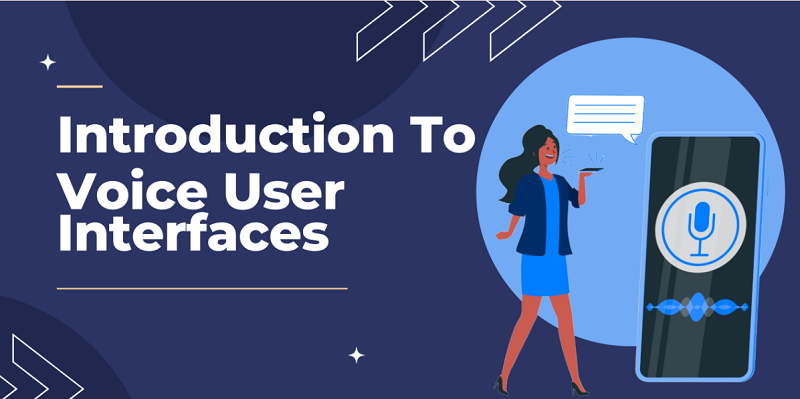
Voice User Interfaces (VUIs) are a cutting-edge technology that is transforming the way we interact with machines. They are essentially computer programs that recognize and respond to spoken language, allowing users to control devices and access information through voice commands. This innovation has its roots in early speech recognition research conducted in the mid-20th century. However, significant advancements in artificial intelligence (AI) and machine learning over the past decade have fueled the development of robust and user-friendly VUIs.
Today, some of the leading tech companies in the world are heavily invested in VUI technology. Amazon, Apple, Google, and Microsoft are all major players in the VUI field, developing popular virtual assistants like Alexa, Siri, Google Assistant, and Cortana, respectively. These virtual assistants are integrated into smart speakers, smartphones, and other devices, enabling users to perform a wide range of tasks using voice commands.
The rise of VUIs has created a growing demand for skilled UI/UX designers who can create intuitive and user-friendly voice-based interactions. Many online courses provide comprehensive training in UI/UX design principles, including those specifically focused on VUI design.
VUIs are revolutionizing the way we interact with technology. Gone are the days of clunky keyboards and endless scrolling. Now, we can simply speak our commands and get things done. Whether you’re a tech wizard or someone who just wants to make life a little easier, VUIs are worth exploring. So, let’s delve into the exciting world of VUIs and see why they’re the future of interaction design.
What is VUI?
But what exactly are VUIs? Voice User Interfaces are systems that allow us to interact with technology using our voices. They use a combination of speech recognition and artificial intelligence (AI) to understand what we’re saying and respond accordingly.
Think of all those virtual assistants you’ve seen in movies – like Jarvis from Iron Man. Well, VUIs are bringing that kind of futuristic interaction to our everyday lives. Examples of VUIs include popular smart speakers like Amazon Echo and Google Home, as well as virtual assistants on our smartphones like Siri and Alexa.
Benefits of VUI
Future: Convenience at Your Command Enhanced Efficiency: VUIs offer a significant boost to efficiency in our daily lives. Imagine driving down the road and needing to navigate to a new location. With a VUI, you can simply say “Hey Google, navigate to Main Street Bakery” without having to take your eyes off the road or fumble with your phone. This promotes safety and allows you to multitask seamlessly.
Increased Accessibility: VUIs are a game-changer for people with disabilities. For individuals with visual impairments, using a VUI eliminates the need to interact with a physical screen. Similarly, for those with mobility limitations, VUIs allow them to control devices and access information hands-free. This promotes greater independence and inclusivity.
Improved Safety in Certain Contexts: In situations where using your hands is impractical or even dangerous, VUIs provide a safe and convenient alternative. For instance, a chef can use a VUI to set timers, adjust oven temperatures, or convert measurements while keeping their hands busy in the kitchen. This helps to minimize distractions and potential hazards.
Simplified Task Management: VUIs can streamline our daily routines by allowing us to manage tasks through voice commands. For example, you can set reminders, add items to shopping lists, or control smart home devices all with your voice. This frees up mental space and allows you to focus on other priorities.
User Experience (UX) : User experience is all about making things easy and intuitive for users, and VUIs excel in this area. They’re perfect for multitasking, keeping your eyes free for other tasks, and even making technology more accessible for people with disabilities.
Designing for Conversation
But creating a good VUI isn’t just about throwing in some fancy speech recognition software. Interaction Design (ID) plays a crucial role in making VUIs user-friendly.
Here’s the thing: unlike tapping buttons on a screen, voice interactions are more like conversations. VUIs need to understand natural language, respond in a way that feels natural, and anticipate what users might ask next.
This is where AI comes in. VUIs use AI to process language, understand context, and even learn from user interactions over time. The more you use a VUI, the better it gets at understanding your voice and responding to your needs.
Is the VUI Revolution Here to Stay?
The rise of VUIs is undeniable. The market for smart speakers is booming, and virtual assistants are becoming increasingly sophisticated. As AI and natural language processing continue to develop, we can expect VUIs to become even more powerful and versatile.
VUIs are an exciting development in the world of technology. They offer a more natural and intuitive way to interact with our devices, making our lives easier and more convenient. Whether you’re a tech enthusiast or just someone looking for a way to streamline your daily routine, VUIs are worth exploring.
Ready to learn more about UI/UX design and how VUIs are changing the game?
There are many ui ux design online courses available that can teach you the fundamentals of interaction design and how to create user-friendly interfaces, including those specifically focused on VUIs. With a little effort, you can learn the skills you need to be part of the VUI revolution!
So, ditch the keyboard, put down your phone, and start talking to your tech! The future of interaction design is here, and it’s listening. Just remember to speak up – the future is voice-activated!






